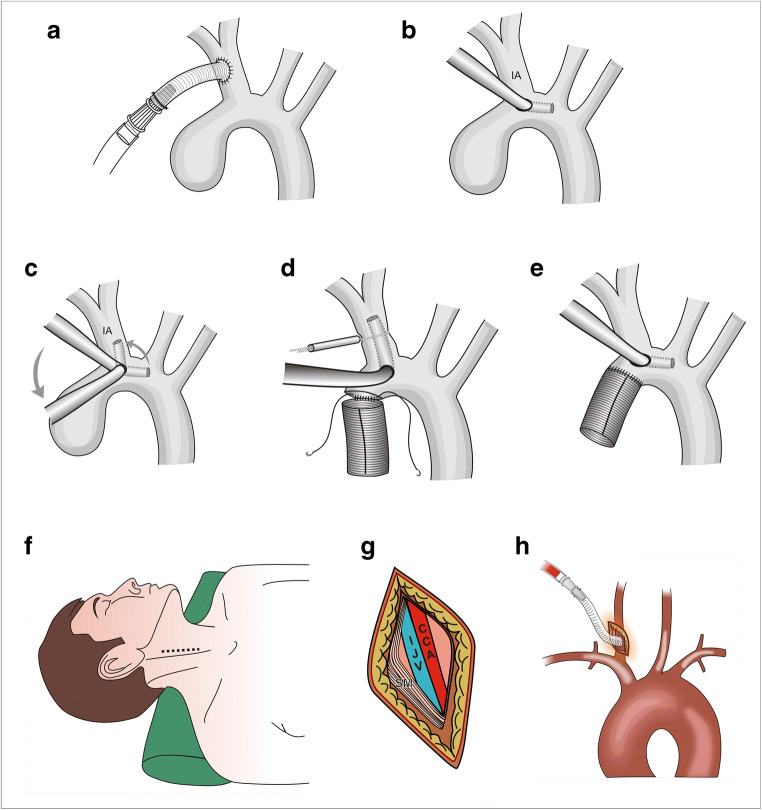Fig. 4.
Technique of Innominate Artery And Common Carotid Artery Cannulation. a An 8-mm vascular graft is sutured to the innominate artery midway between the origin and the bifurcation in an end-to-side fashion and connected to the arterial line via a 3/8–1/4 straight connector. b Cannula translocation technique of innominate artery cannulation. The distal ascending aorta is cannulated very close to the origin of the innominate artery (IA). Initially, the tip of the cannula is in the transverse arch. c Just before the arch is opened, the bypass flow is reduced, purse string around the cannula is loosened, the cannula tip is rotated, and 3–4 cm of tip is pushed in the innominate artery. d The snare around the innominate artery is tightened and the aortic clamp removed. Under surface of the arch is resected and the distal anastomosis is performed in an open fashion. e After completion of the anastomosis, the arch and the grafts are deaired, clamp is applied on the graft, innominate snare and cannula purse-strings are loosened, and the cannula is pulled and directed towards the transverse arch. f Technique of common carotid artery cannulation. The neck is kept extended with chin turned towards the opposite side. A 5-cm-long skin incision is given in the mid-third of the neck along the anterior border of sternocleidomastoid. g Sternomastoid muscle is retracted posteriorly. The carotid sheath is opened, and middle part of common carotid artery is dissected circumferentially. h After heparinization, an 8-mm vascular graft is sutured to the common carotid artery and connected to the arterial line via a 3/8–1/4 straight connector

